

Updated: 21.10.2025


Self-discovery, guidance, manifestation.
It shows you how to connect with your intuition, your inner voice.
Knowledge is a treasure!
And tarot helps you to unlock this treasure.
Tarot reading is NOT actually fortune telling!
Instead of showing the future, it reveals the present and answers the questions swirling inside you, the cards are subjective you can adjust the messages to yourself and your own situation!
But how?
In the article, we show you everything, from the history and process of tarot reading to the meanings and uses of tarot cards all in one place!
The tarot (pronounced: tah-roh) can be explained in two ways.
Simple Definition: The tarot is a deck of 78 cards.
In Depth Definition: The tarot is a symbolic system that combines the wisdom, philosophies, stories, morals and life sciences of many cultures into 78 images. The unique images on the cards depict similar, archetypal personality traits and life situations through a narrative. Every spiritual lesson a person can experience in their lifetime is represented in the Tarot cards.
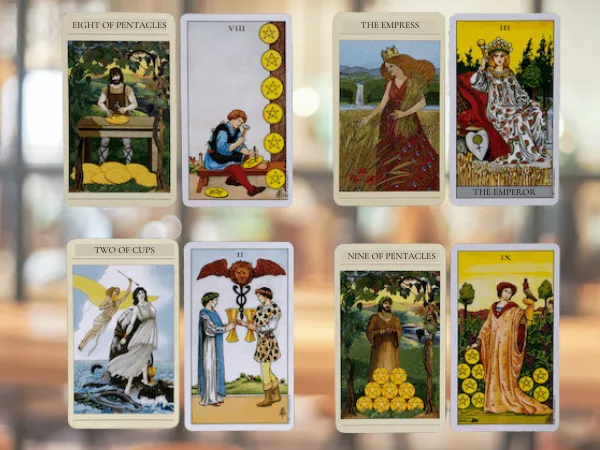
The known origin of tarot cards dates back to Renaissance Italy, where they were initially used for playing a game similar to bridge. Around 1500, this game was renamed “Tarocchi,” which is where the name Tarot comes from.
The idea of using the cards for divination developed alongside their use in games, much like the use of dice for games and fortune telling.
Today, there are three predominant tarot systems:
I use and present the Rider-Waite-Smith system.
Its symbolism draws from various sources, including:
Don’t let all these -ologies and -isms intimidate you. You don’t need to delve deeply into them to use tarot. However, knowing a few concepts can make it much easier and quicker to grasp the system and confidently interpret the cards from the beginning.
I’ll share these tricks with you, just keep reading! 🙂
The word TAROT aims to symbolize the eternal cycle of existence with the first/last T. Paul Foster Case, an American occultist, created the phrase “ROTA TARO ORAT TORA ATOR” from this tetragrammaton, which translates to “The Wheel of Tarot speaks the Law of Ator (Athor).”
Overall, tarot is a tool.
It means something different for everyone.
You can think of it as a mirror, a map or a picture book in pieces. It could even be seen as an ancient version of Google Translate, converting the language of “what am I missing, what do I need to know” into “okay, now I understand/see.”
It’s important to clarify that using tarot cards is NOT about predicting the future!
Tarot cannot tell you that you’ll meet your husband, named John, in 2028 or that you shouldn’t go to the beach next Sunday because you’ll get sunburned.
If it could predict the future, it would imply that everything is set in stone and you have no free will to make your own decisions in the present.
The drawn cards depict your current mental, emotional, physical and spiritual conditions.
They also show what challenges, questions or problems might arise if you continue on your current path and what steps you can take now if you want to change direction and achieve your goals in the future.

Just like “all bugs are insects, but not all insects are bugs,” tarot cards can be used for “fortune telling” although I don’t like to emphasize this while oracle cards are not tarot cards.
The main difference lies in the structure of the system!
The structure, composition and the meanings of the 78 tarot cards are always the same!
The images on the cards may vary and there may be slight differences in the names, but the underlying messages of the cards are identical.
In contrast, oracle cards are much more flexible, can have any number of cards, and can be created on various themes.

Neither is better than the other and they can be used separately or together.
Personally, I find the most accurate readings are those where I use multiple decks.
Each deck highlights and brings a new perspective to the interpretation, making it more detailed, elaborate and personal as we can delve deeper into various layers of the question.
For example, you might start a reading by drawing one or two oracle cards to outline the general theme or feeling about the situation.
This can be followed by a complete reading with the tarot cards.
Additionally, you can draw oracle cards at the end of the reading to provide further advice and suggestions for the final message.
When a question during a reading is strongly time specific (meaning timing is crucial), I always explain that I cannot give an exact date.
As I mentioned earlier the future and the timing of events are not set in stone!
We have free will over the decisions we make. The cards can indicate the likelihood of an event happening, but our actions or lack thereof determine the timing.
Moreover, actions alone are not enough, we must prepare for them first!
Before reaching a significant milestone in our life or taking a challenging step, we always need to learn some lesson. Actions can only occur when we are ready.
For instance, if a 3 card love tarot reading indicates the appearance or deepening of a relationship, for it to happen in reality, we need to:
The bottom line: We can’t just wait for things to fall into our lap!
The cards help illuminate what might be necessary for the desired event to materialize and at what point on the path we currently are.
With this knowledge, we can make more effective decisions, achieving our goals in a shorter time.
The 78 cards of a tarot deck are divided into two major parts, known as arcana (from Latin: arcanum, meaning “hidden, secret remedy”):

The Major Arcana cards in tarot were considered the trump cards in the deck used in card games.
In a spread, they reveal the stage of the reading, highlighting the main archetypal themes, important life lessons, and karmic influences related to the situation at hand.
If we interpret our lives as a play, the Major Arcana cards represent the main storyline and the key characteristics and roles of the protagonists.
The Major Arcana consists of 22 cards numbered from 1 to 21, with earlier decks using Roman numerals and more modern ones using Arabic numerals. The Fool card is considered unnumbered (0) akin to the joker in card games and can be placed at both the beginning and the end of the Major Arcana deck.

The 22 Major Arcana cards depict the story of the Fool’s journey, through which we learn about the new teachers he encounters and the life lessons he must learn. The World card (21) represents the fulfillment of his destiny and as the cycle returns to the beginning, the Fool starts a new adventure.
At the beginning of the journey, the Fool is portrayed as a naive, innocent and irresponsible child.
As he progresses, he encounters various roles in life such as responsibility, care, leadership, failure, and eventual recovery eventually returning to the start, where the journey begins anew.
Life consists of cycles (e.g., childhood, a new job, parenthood) and within each cycle, we progress through these 22 steps, leveling up before starting a new cycle.
In this sense, for example, the Death card doesn’t signify the Fool’s demise but rather represents the end of a particular life cycle and the transformation taking place. This transformation leads to a rebirth and the continuation of his journey.
The Fool (0) – Beginnings
Symbolizes the start of a journey, new beginnings and potential.
The Magician (1) – Manifestation
Represents the power to create and manifest desires into reality.
The High Priestess (2) – Intuition
Embodies inner wisdom, intuition and the mysteries of the unconscious mind.
The Empress (3) – Femininity
Symbolizes nurturing, abundance and the essence of femininity.
The Emperor (4) – Authority
Represents structure, authority and stability.
The Hierophant (5) – Wisdom
Signifies spiritual guidance, wisdom and tradition.
The Lovers (6) – Choices
Reflects relationships, choices and the concept of unity and harmony.
The Chariot (7) – Determination
Symbolizes triumph, determination and the will to overcome obstacles.
Strength (8) – Courage
Represents inner strength, courage and patience.
The Hermit (9) – Introspection
Reflects solitude, introspection and inner guidance.
Wheel of Fortune (10) – Life Cycles
Represents change, cycles of life and destiny.
Justice (11) – Fairness
Symbolizes fairness, justice and the importance of balance.
The Hanged Man (12) – Surrender
Represents letting go, surrender and seeing things from a different perspective.
Death (13) – Transformation
Signifies endings, transformation and the start of new phases.
Temperance (14) – Patience
Embodies balance, moderation and patience.
The Devil (15) – Constraints
Represents temptation, limitations and the shadow self.
The Tower (16) – Upheaval
Symbolizes sudden change, disruption and revelation.
The Star (17) – Hope
Reflects hope, inspiration and renewal.
The Moon (18) – Illusion
Represents illusions, dreams and the subconscious.
The Sun (19) – Success
Symbolizes success, joy and clarity.
Judgement (20) – Reflection
Embodies evaluation, reflection and the call to action.
The World (21) – Completion
Represents completion, fulfillment and the end of a cycle.

The 56 cards of the Minor Arcana are divided into four suits, each associated with a different elemental aspect and aspect of human experience:
Each suit contains:
4 Court Cards:
The Minor Arcana cards depict the more immediate, practical aspects of life, addressing day to day challenges and situations. They provide insight into temporary and practical matters, offering a different perspective compared to the broader, more significant lessons of the Major Arcana.
In the theater analogy, the numbered cards are like various scenes in the plot, representing different situations and events. The court cards are akin to actors or their roles, each bringing their unique characteristics and personalities into the story.
Beginners often make the mistake of relying solely on textbook definitions to interpret tarot readings, rather than trusting their own intuition. They might feel the need to consult a guidebook for each card’s meaning, which can detract from the personal insight that a tarot reading can offer.
Sound familiar? 🙋 I’ve definitely been there myself.
The problem with this approach is that it removes the “personal touch” from the reading, limiting and simplifying the message of the spread. It’s easy to get overwhelmed when each card can have multiple interpretations, especially when considering their upright or reversed positions.
You may also be interested in these
Don’t stress about memorizing every card’s meaning! As you practice more, you’ll become increasingly familiar with the cards.
To help you interpret the 40 numbered cards of the Minor Arcana, I recommend using two systems:
Here’s a quick guide to the meanings and energies of the numbers 1 through 10:
Each suit represents different areas of life:
By integrating the number and suit information, you can interpret the broader meaning of a Minor Arcana card.
For example, consider the Two of Pentacles:
To further refine your interpretation, pay attention to the imagery on the card. The illustrations often provide additional context and nuances to the card’s message.

Interpreting the court cards in the Minor Arcana can be challenging due to their varied meanings. It’s essential to consider the context provided by other cards in the spread and the question being asked. Court cards can represent:
For example, the Two of Pentacles might suggest that you are juggling multiple responsibilities and need to manage your time and resources effectively.
Interestingly, court cards are sometimes linked to the Myers-Briggs Type Indicator (MBTI) personality types. Each court card can reflect different personality traits corresponding to the 16 MBTI types.
Before diving into the practical use of tarot cards, let’s review the essential steps and considerations to effectively integrate these insights into your readings.
Before diving into the tarot reading, it’s important to understand that the circumstances surrounding the tarot card reading are as crucial to the process as the cards themselves!
A confidential atmosphere, attention to each other or to oneself, creates the opportunity for the message to surface and become interpretable.
If we simply pull 3 cards in the middle of preparing and serving breakfast, we won’t be in the right state to understand what the cards are trying to convey and we may end up more confused than before we started.
Pay attention to these 4 aspects:
The physical space refers to the environment where the reading takes place. It should be safe, calming and orderly. Avoid unnecessary distractions, as they can detract from the focus of the reading. While it’s not necessary to light candles or use crystals, they can add special energies. Customize your space! Diffuse essential oils or make yourself a nice tea. You can sit in complete silence, but if soft music helps you relax, that’s fine too. Make sure you’re physically relaxed, sit comfortably, avoid crossing your arms or legs and take a few deep breaths to relax!
The mental space refers to a clear and focused mind. During the tarot reading, concentrate solely on the question and not on what you need to buy at the store tomorrow or where you need to rush in half an hour. If you don’t have time for meditation or yoga beforehand (though a short session is recommended), then deep breathing exercises can help.
The emotional space is crucial. Our emotions reveal our stance on a problem or question. Before the reading, release any accumulated emotions and become open to what you need to hear. Pay attention to your feelings during the reading and connect with your inner, intuitive voice, as the answer (or part of it) is already within you.
The spiritual space may be the hardest to grasp as it often intertwines with the previous 3 spaces. Let go of expectations about the reading and the outcome, and allow yourself to dedicate this time to yourself. During a tarot reading, you connect with your soul and there is no need for forcing, only allowing.
You may also be interested in these
I hope you’re still with me, because now we’ve reached the part that’s probably of most interest to you: the “How”.
How do you use the cards?
What should I do?
How do I find out what the message is?
I’ve compiled the process for you in 7 steps, so by the end, you’ll be able to use the tarot cards yourself.
If you don’t have your own deck yet, it’s time to get one!
You might have heard various tales about how you should only read tarot if you received the cards as a gift and didn’t buy them yourself.
Why should you wait for someone else?
Unfortunately, not everyone is as lucky as I was.
If you feel open to the idea and have a strong urge to try it out, you should definitely listen to that call!
If you’re a complete beginner, I recommend starting with the original Rider-Waite-Smith deck, as all modern decks are based on it. If you can use that one, you’ll have no trouble with others.
If you’re actively researching the world of tarot, you might come across advice encouraging you to use the cards intuitively and not to pay too much attention to traditional meanings.
I partially agree with this!
However, if you’re a complete beginner and try to figure things out based on a few images, you might quickly become confused.
Before diving into anything, take some time to get familiar with the deck and the cards.
Look at the images!
Read the sections “The Structure and Composition of the Deck” and “Meanings of the Tarot Cards” if you haven’t already!
Browse through the accompanying booklet of the deck.
You’ll feel much more confident because this special world will already be familiar to you!
In the section “Things to Do Before Using the Cards”, I go into detail about what this involves, so be sure to read it if you haven’t already!
Whether you’re reading for yourself or for someone else, it’s always important to clearly and specifically define the purpose of the reading i.e., what question you want to get an answer to. The two extremes that usually occur are overly specific or too general questions.
Overly Specific: When will I meet my future husband?
Too General: Tell me about my life, what do I need to know?
What’s wrong with these?
With the first one, it’s time specific and conditional, i.e., that you will be married.
With the second one, it takes too much time to figure out what the message might be referring to. If the question is vague or general, unfortunately, the answer will be too.
Instead, try to phrase the essence of the question in terms of what you (or the person you’re reading for) need to focus on or learn in a specific area of life.
For example:
Once you have a specific question, focus on it during the shuffling and drawing of the cards.
If the reading isn’t centered around a specific question but rather on personal or business goals, focus on that goal!
My very first spread was a 10 card Celtic Cross.
Let’s just say I had no idea what I was doing or what the message was. While the Celtic Cross is a great spread for those experienced with tarot, it can be too complex for a beginner.
Instead, I recommend starting with a 3 card spread (for example, a 3 card love tarot reading).
It’s simple, easy to use and still provides a clear picture.

Here are some examples you can confidently try:
Sometimes, you might feel that you’re missing some information for a complete picture.
In such cases, you can draw clarifying cards related to a specific aspect of the question, but it’s important not to overdo it.
Don’t draw cards one after another until you get the desired message!
I recommend a maximum of 3 additional cards.
There are many ways to shuffle the cards and there are no strict rules on how to do it.
Do it the way you would with a deck of playing cards and in a way that feels comfortable to you. There’s no need to overcomplicate things.
However, it’s important to think about the question or the goal while shuffling!
If you’re a beginner, I don’t recommend using reversed cards, as they can be confusing. Once you become more familiar with the cards, you can incorporate reversed cards into your readings.
You can cut the deck before drawing, although I don’t always do this it depends on how I feel.
Once you’ve finished shuffling, it’s time to draw the cards.
There are various rules you might read about this.
Some say it doesn’t matter which hand you use to draw others say you should only use your left hand (if you’re right handed).
Do this based on your intuition.
Don’t try to overthink the drawing process, trust your inner guidance. Trust yourself and let your intuition guide your hand. Lay out the cards in the order you draw them.
There are also no strict rules about what to do with cards that fall out during shuffling.
Some people include these cards in the reading, believing they fell out for a reason, while others only work with the cards drawn by hand. I leave this to your own intuition.
Once the spread is complete, examine each card individually:
Once you’ve looked at each card, analyze how they relate to each other:
Some cards may appear very negative at first glance.
If such a card comes up in your reading, don’t panic!
These cards are meant to draw your attention to challenges so you can face them and grow. Don’t see them as bad omens, but rather as guidance on what you need to notice or learn.
At first, interpreting the cards might be challenging. It’s okay to refer to card descriptions, but don’t rely solely on them or cling to them! Each card has many meanings focus on what is relevant to the question at hand. Most importantly, trust your intuition!
In the long run, it can help speed up your interpretation if you remember a few key words for each card. This will develop over time as you use the cards more.
Imagine that the cards you’ve drawn are frames from a movie. There are two key aspects to consider:
It’s easy to get lost in the individual images and symbols and sometimes we try to articulate something very profound or overcomplicate simple threads.
Don’t overcomplicate!
Avoid searching for twenty alternative explanations or unnecessary details.
Answer the question you formulated at the beginning of the reading clearly and understandably, as if you were explaining what has been happening to you recently to your best friend.
If You’re Reading for Yourself:
Write down the following:
A few weeks later, review your notes and see:
If You’re Reading for Someone Else:
Tarot is useful for many things:
One thing is certain:




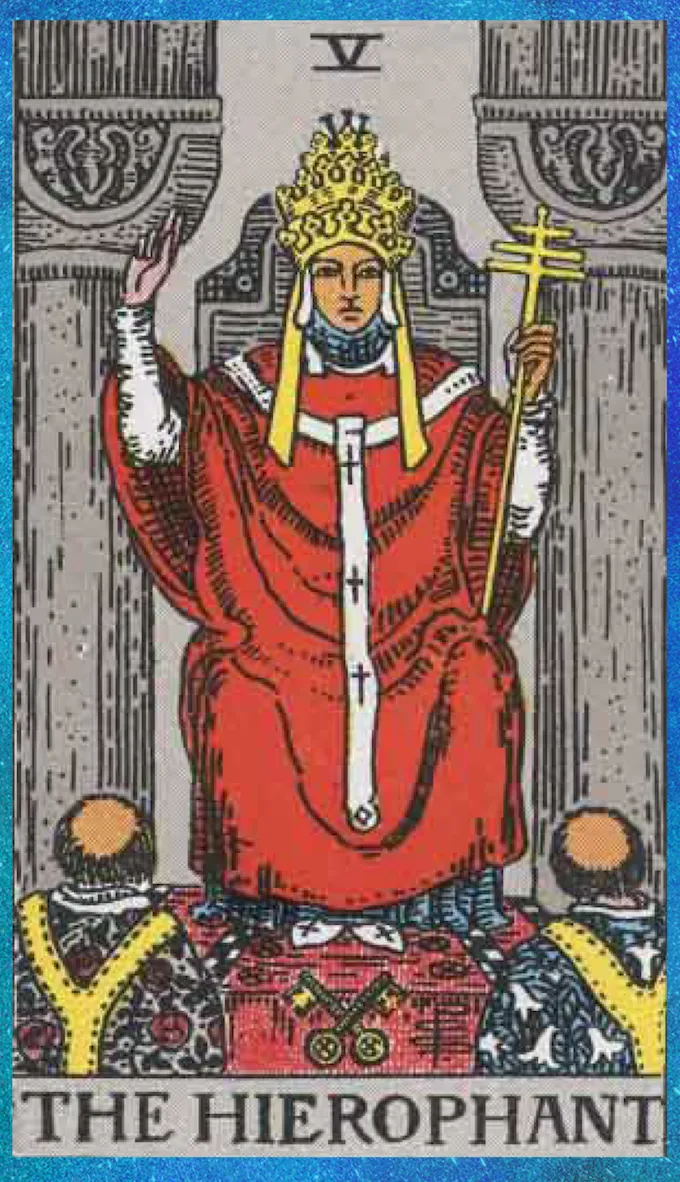
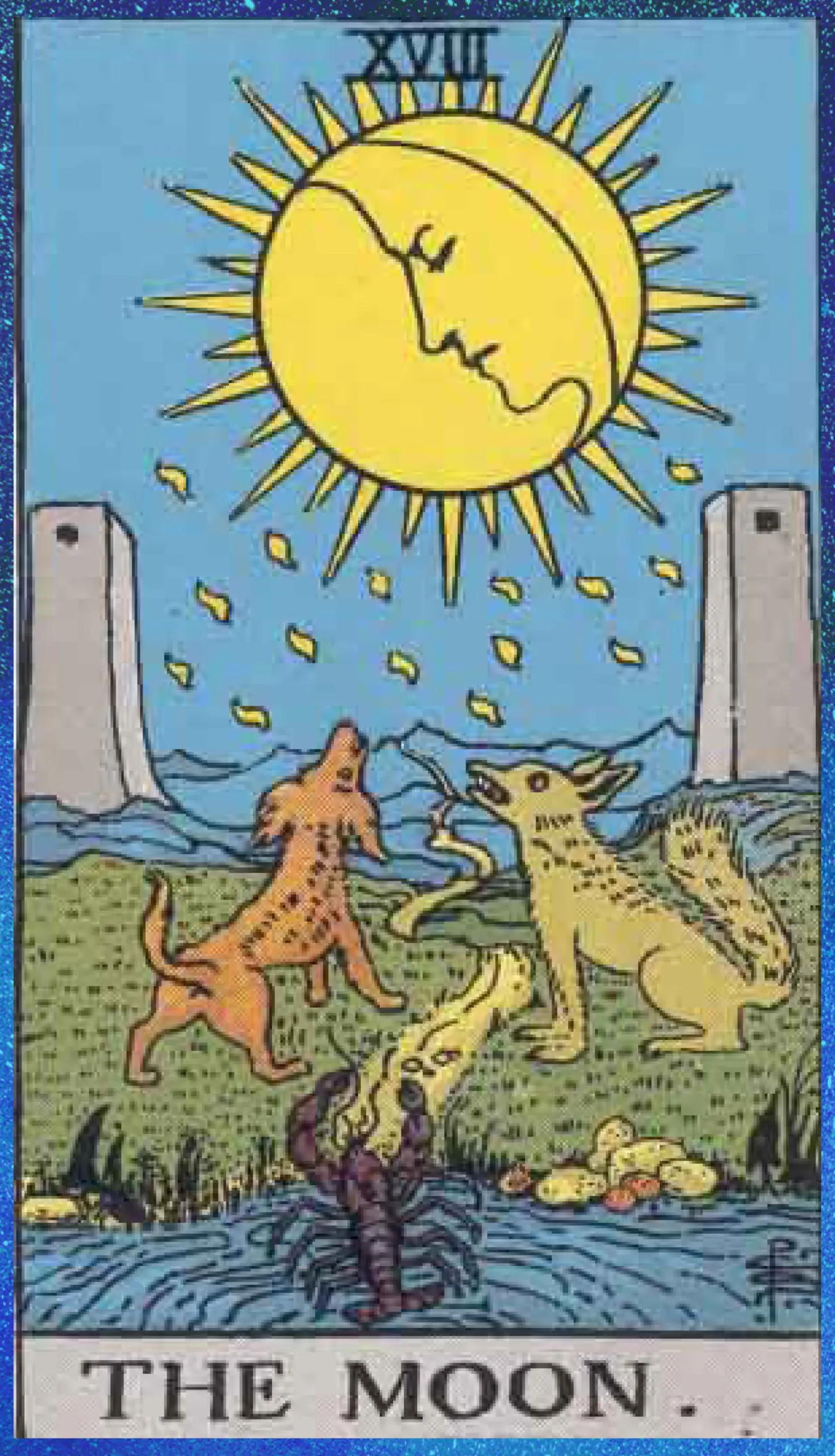
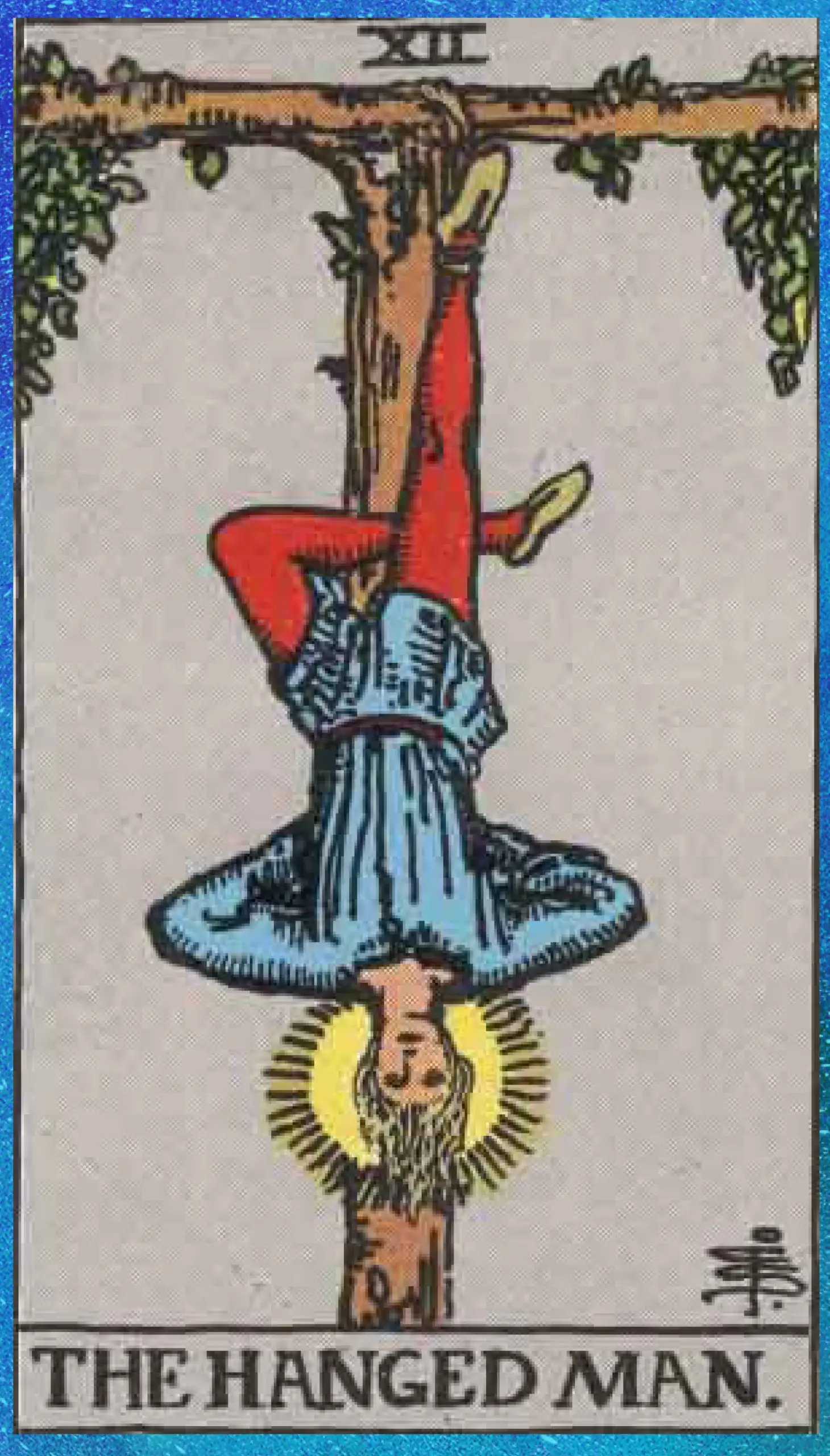

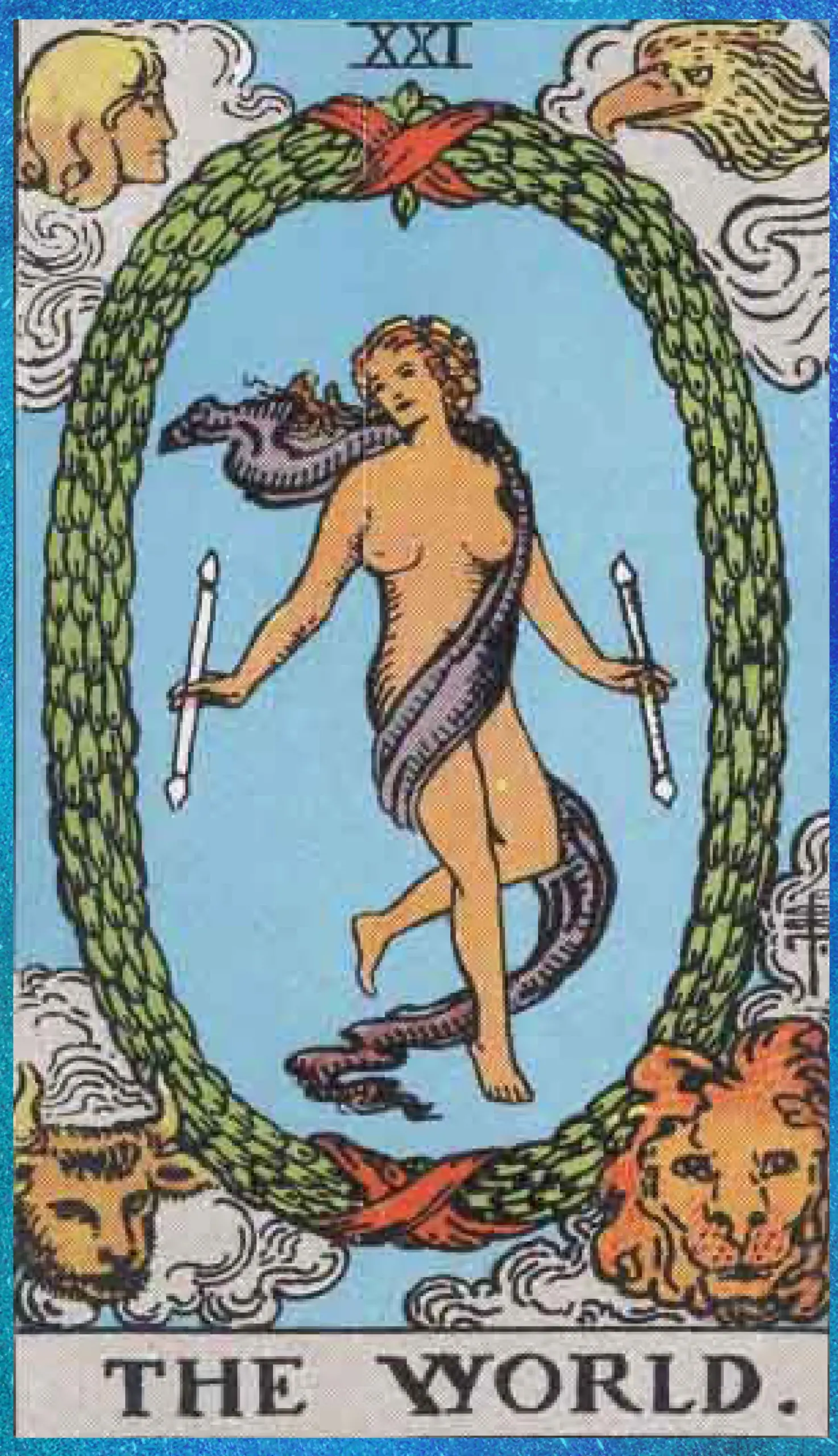

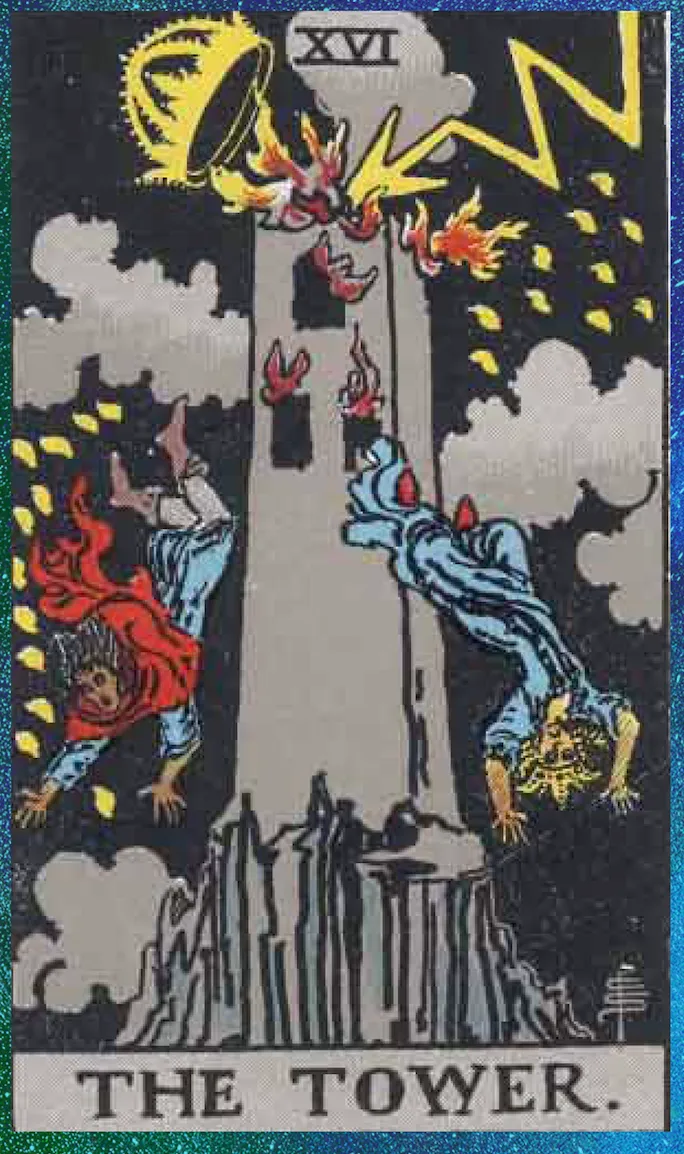




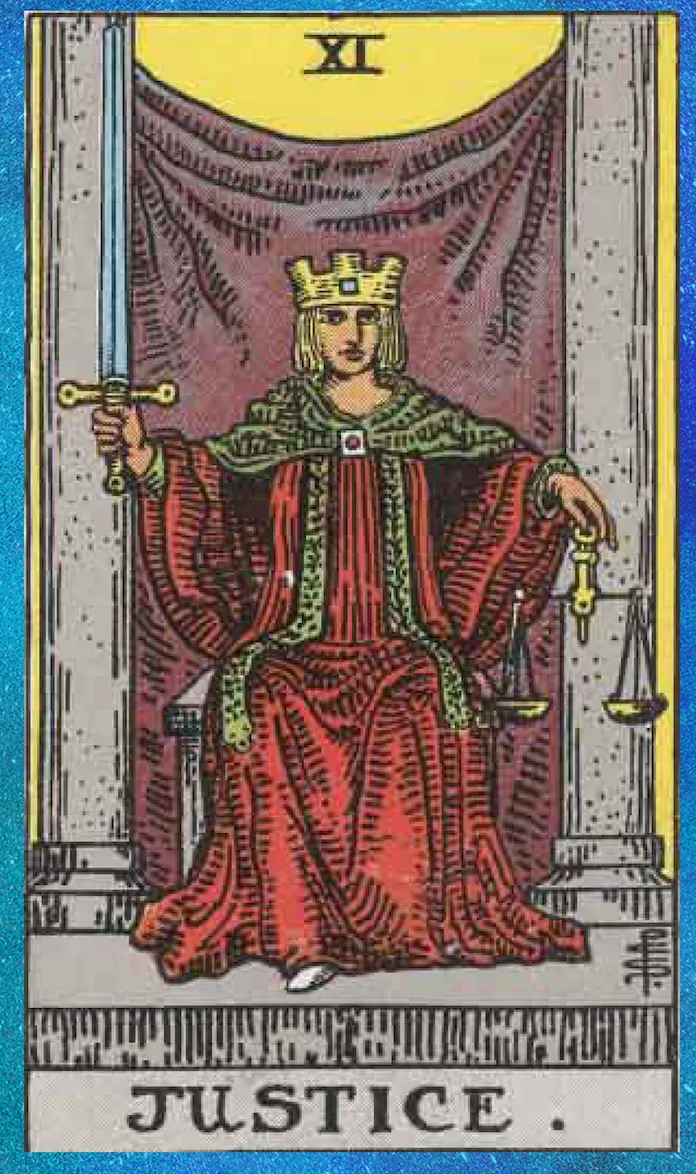
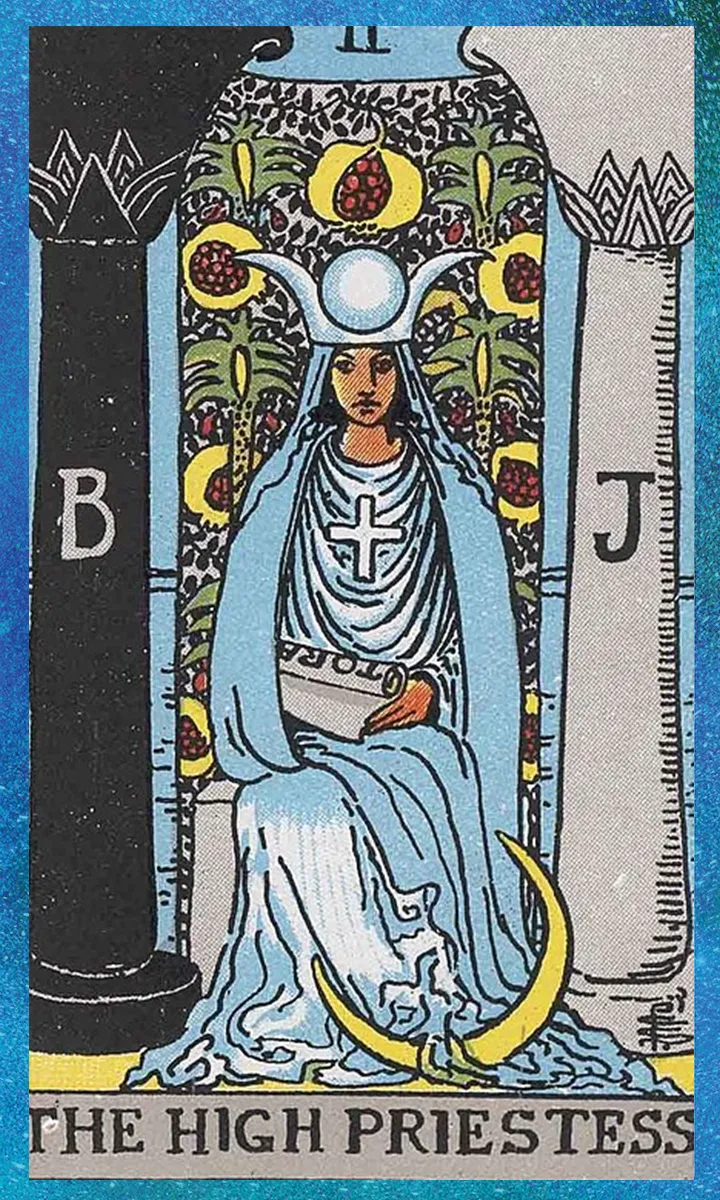
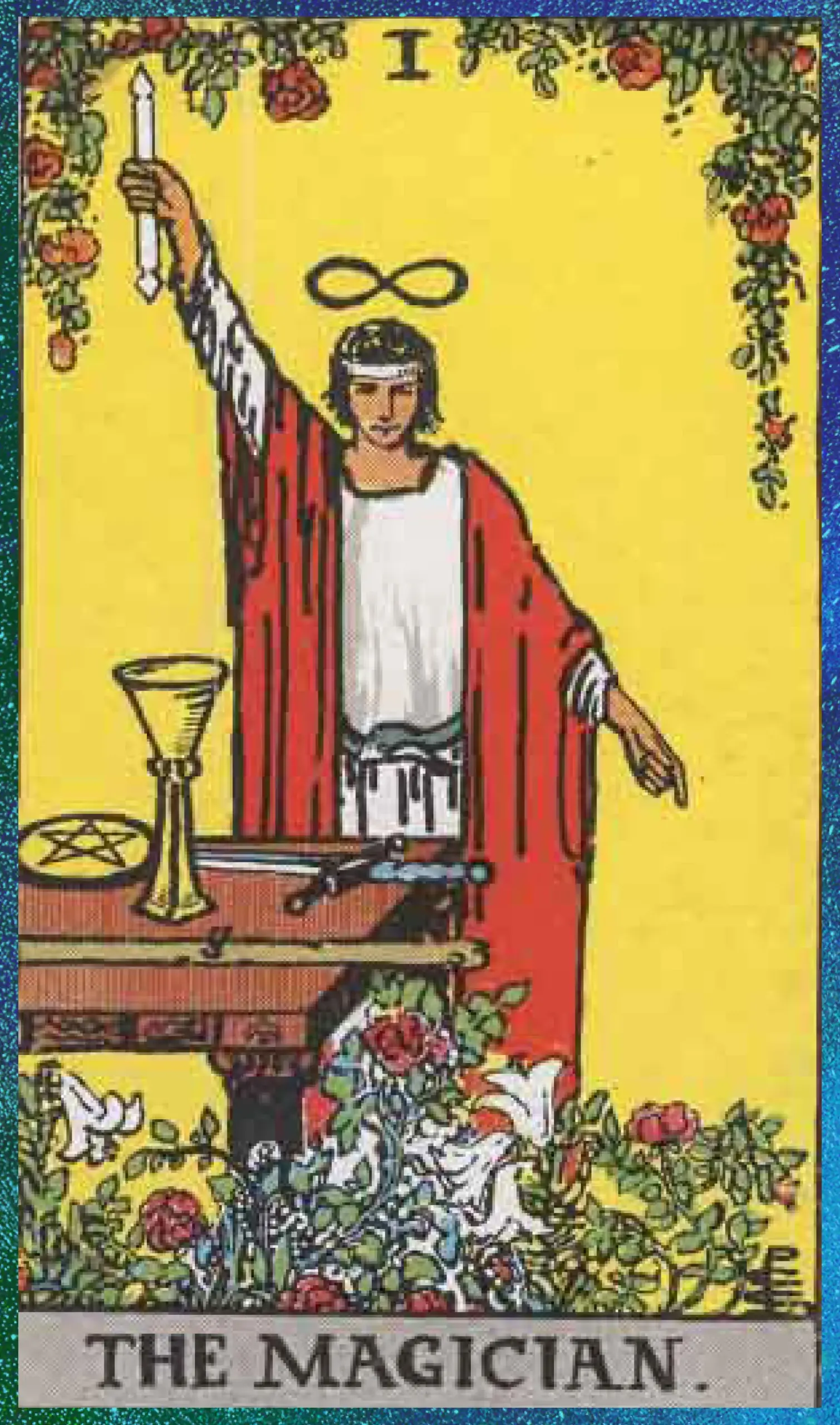



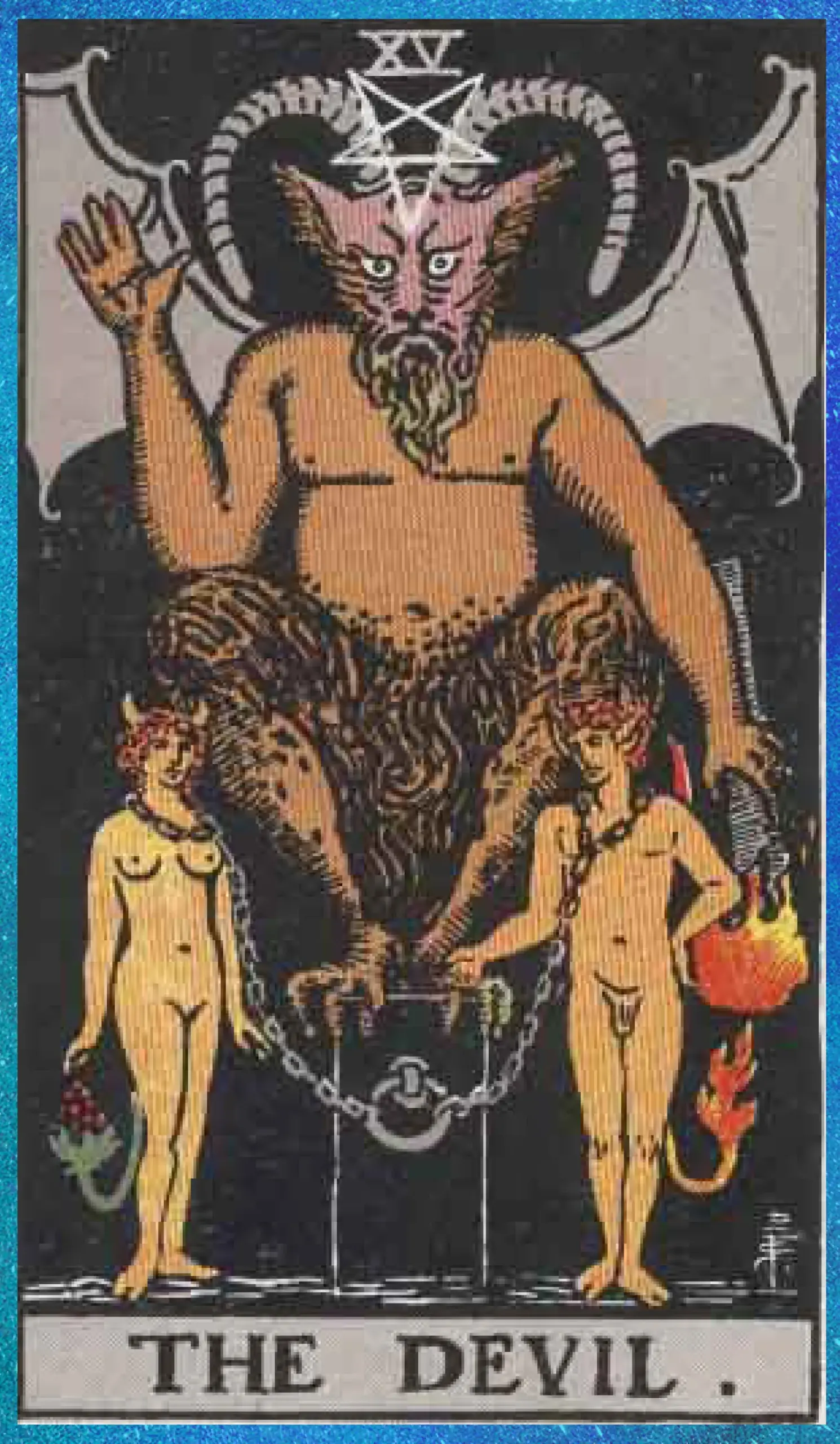
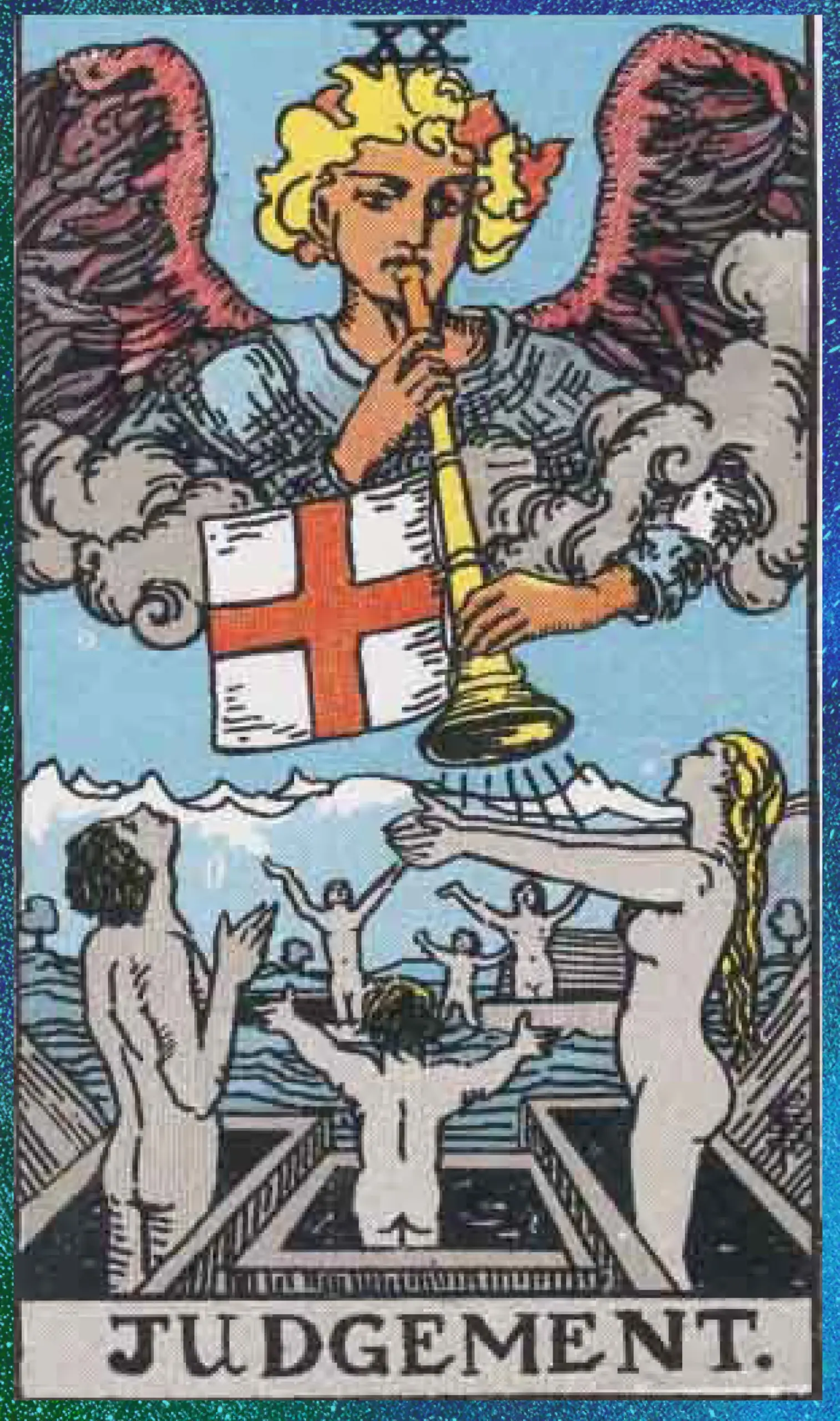
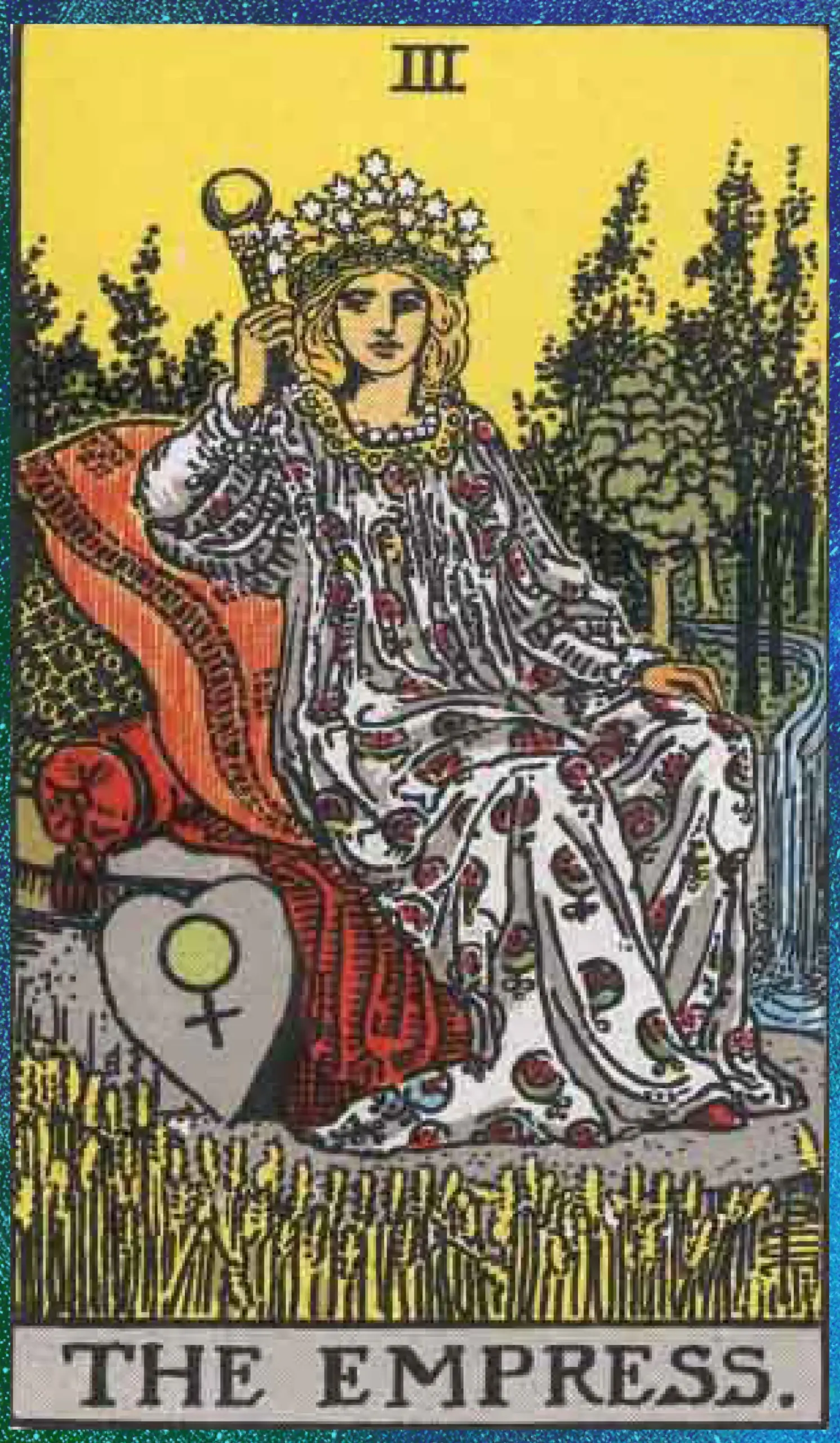
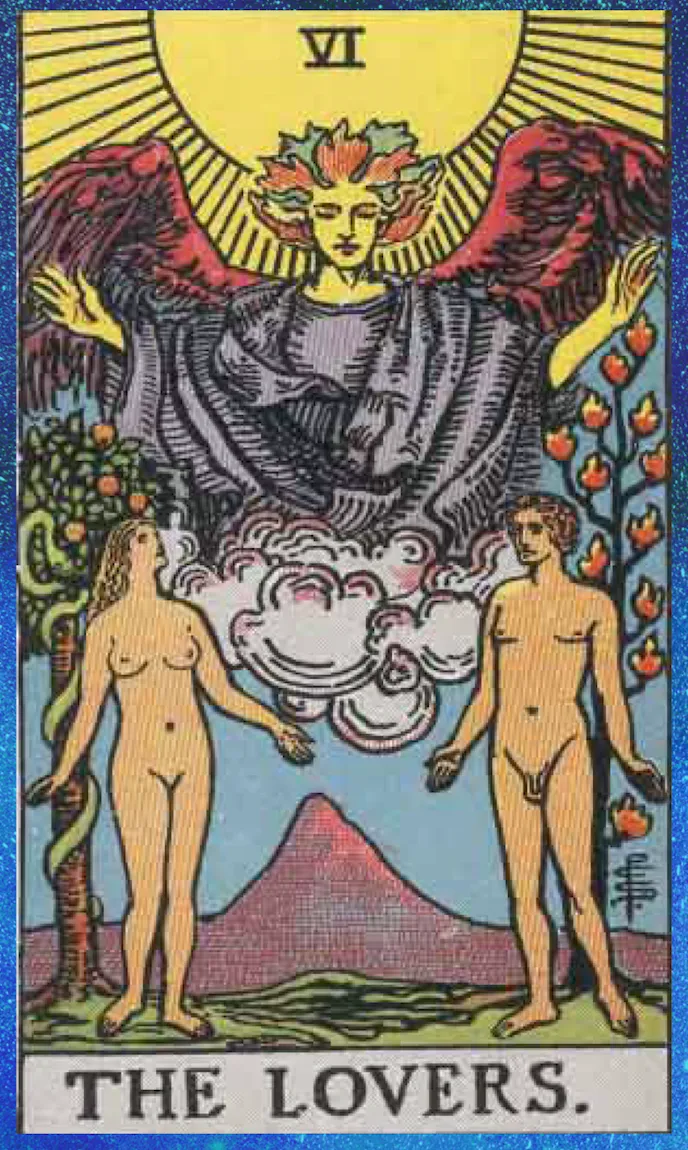
If this article resonated with you, I invite you to follow me on my Pinterest profile, where I share daily inspiration to nourish the soul and uplift the spirit. Don’t miss out on the magic of every new post! Follow me and join me on this journey of connection and transformation.

